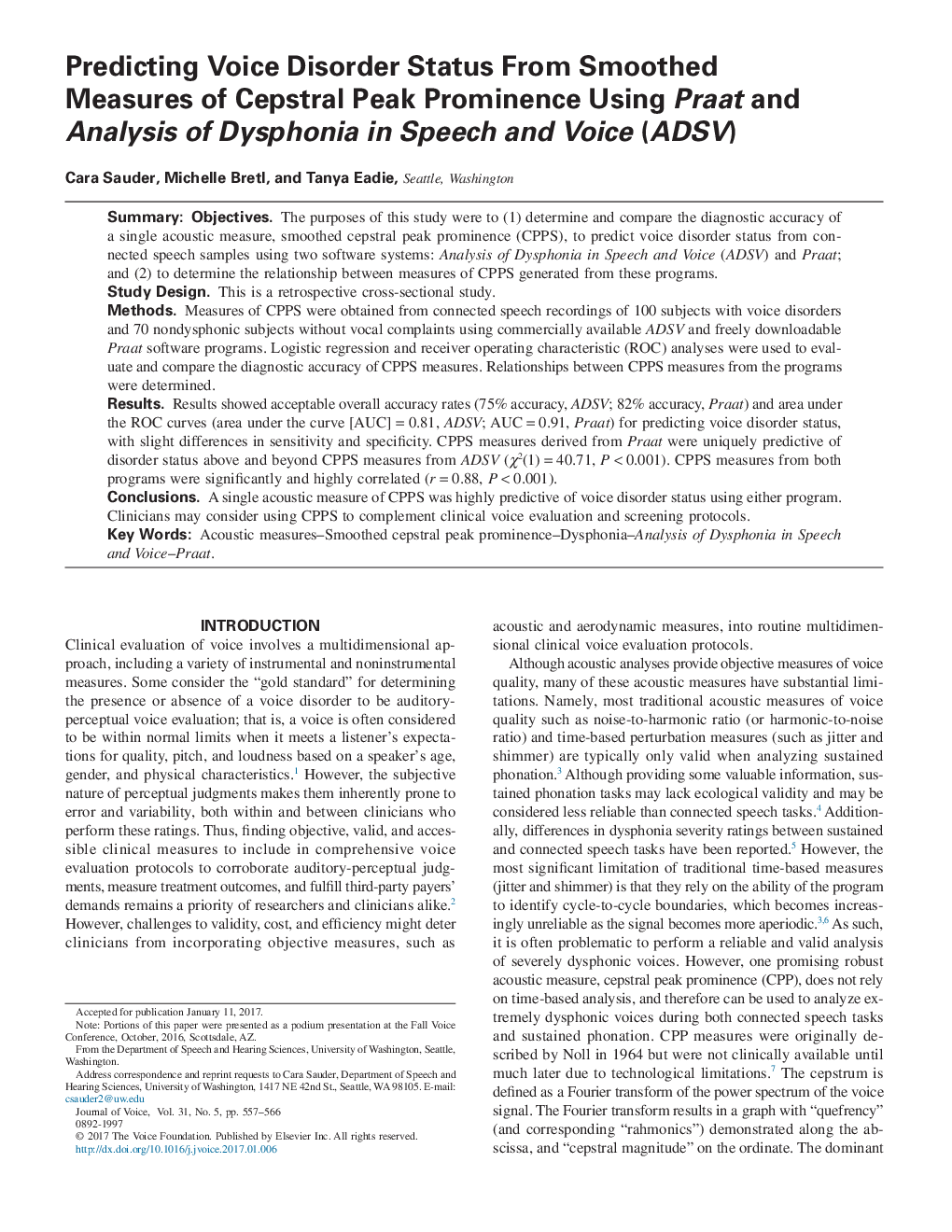| Article ID | Journal | Published Year | Pages | File Type |
|---|---|---|---|---|
| 5124131 | Journal of Voice | 2017 | 10 Pages |
SummaryObjectivesThe purposes of this study were to (1) determine and compare the diagnostic accuracy of a single acoustic measure, smoothed cepstral peak prominence (CPPS), to predict voice disorder status from connected speech samples using two software systems: Analysis of Dysphonia in Speech and Voice (ADSV) and Praat; and (2) to determine the relationship between measures of CPPS generated from these programs.Study DesignThis is a retrospective cross-sectional study.MethodsMeasures of CPPS were obtained from connected speech recordings of 100 subjects with voice disorders and 70 nondysphonic subjects without vocal complaints using commercially available ADSV and freely downloadable Praat software programs. Logistic regression and receiver operating characteristic (ROC) analyses were used to evaluate and compare the diagnostic accuracy of CPPS measures. Relationships between CPPS measures from the programs were determined.ResultsResults showed acceptable overall accuracy rates (75% accuracy, ADSV; 82% accuracy, Praat) and area under the ROC curves (area under the curve [AUC]â=â0.81, ADSV; AUCâ=â0.91, Praat) for predicting voice disorder status, with slight differences in sensitivity and specificity. CPPS measures derived from Praat were uniquely predictive of disorder status above and beyond CPPS measures from ADSV (Ï2(1)â=â40.71, Pâ<â0.001). CPPS measures from both programs were significantly and highly correlated (râ=â0.88, Pâ<â0.001).ConclusionsA single acoustic measure of CPPS was highly predictive of voice disorder status using either program. Clinicians may consider using CPPS to complement clinical voice evaluation and screening protocols.
